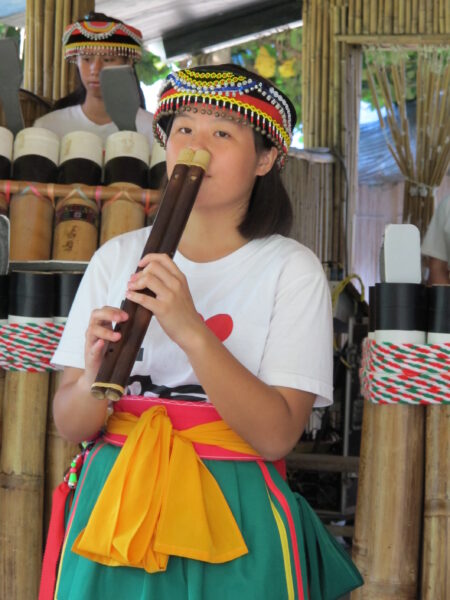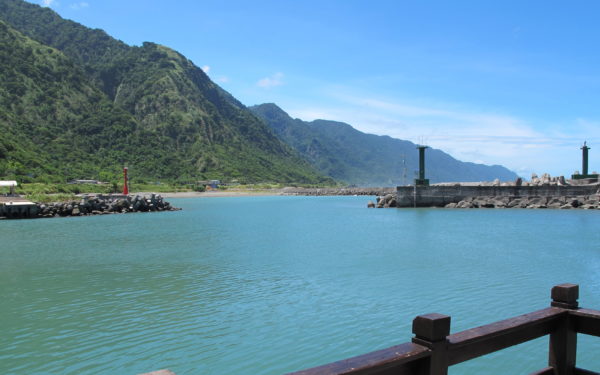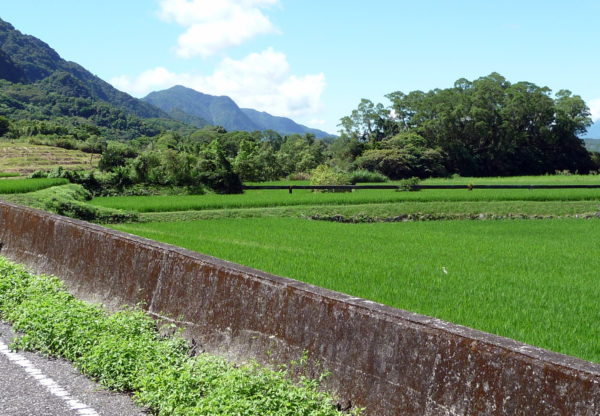East Taiwan
Often called Taiwan’s Hawaii, Taiwan’s east is every bit as welcoming and lushly tropical as the comparison implies. Just like the US island chain, the counties of Hualien and Taitung are home to a multi-ethnic population. Living among them are artists, dreamers, retirees, and entrepreneurs who’ve exiled themselves from the big cities which characterise the western half of Taiwan. Many Taiwanese, as well as outsiders lucky enough to enjoy a comprehensive Taiwan private tour, says it’s their favourite part of the country.
Hualien and Taitung have one fifth of Taiwan’s total land area, but a mere 529,000 people, less than 3 percent of the country’s population. Farmlands and forests dominate the landscape. Hualien City, the most important settlement, has an endearing ‘not so small you can’t get what you need, not so big there are traffic jams’ vibe, not to mention a good range of hotels and restaurants. It’s no wonder many tourists choose to base themselves here, and make day-long excursions to Taroko Gorge or points south.
Many tourists arrive by train, bus, or private vehicle, but those who fly into the city may well notice its most impressive landmark before they land. The Hall of Still Thoughts is a dignified grey edifice quite unlike most Taiwanese temples. It’s the spiritual center of the Buddhist Tzu Chi Charity Foundation, said to be largest non-governmental organisation in the Chinese-speaking world. Tzu Chi’s four million members are active in medical work, education, and disaster relief in Taiwan and overseas. The hall is open to the public and contains multilingual displays about the group’s goals and achievements. Visitors can wind down inside the vast and utterly tranquil chapel.
Wildlife and hot springs in the East Rift Valley
Before the April 3, 2024 earthquake damaged roads accessing Taroko Gorge and destroyed several of the area’s hiking trails, this natural wonder was at the top of many travellers’ must-see list. However, it is far from the only major attraction in the Hualien-Taitung region. If you’ve plenty of time, we suggest spending two full days in the East Rift Valley (dotted with hot springs, farms, and indigenous villages) and at least one day on the Pacific coast.
The valley is a 152-km-long (94 miles) expanse of prime farmland between the Central Mountain Range (where more than 200 peaks are taller than 3,000 m / 9,843 ft) to the west and the Coastal Mountain Range (highest point 1,682 m / 5,518 ft) to the east. Much of Taiwan’s best rice is grown here, and organic farmers make the most of the pristine environment. Within the valley there are several hot springs, notably at Antong and Ruisui. Some of these natural spas have been popular since the Japanese colonial era and still show considerable Japanese influence. Ruisui’s yellowish spring waters average 48 degrees Celsius (118 degrees Fahrenheit) and are rich in iron. At Antong, the water is even hotter.
Serious hot-springs fans may want to add Zhiben — outside the East Rift Valley and just south of Taitung City — to their itinerary. The soothing waters here have been drawing tourists since the 1920s. An excellent way of working up a sweat before getting in the tub (there are both public pools where swimsuits are required and private rooms in various hotels) is to explore Zhiben National Forest Recreation Area. This 111-hectare (274 acres) nature reserve has both semi-rainforest and mixed forest, plus a macaque population that’s neither timid nor troublesome. If you’re lucky, you may spot other beguiling creatures, maybe a Reeves’s muntjac. This a short-tailed deer species is no bigger than a mid-sized dog; on account of its semi-canine yap, it’s often called a barking deer.
Other highlights along the inland route from Hualien to Taitung include the Amis tribal community of Dabalong. This is one of several places where the tribe’s summertime Harvest Festival is celebrated with gusto, and it’s home to a number of renowned woodcarvers.
Birds, butterflies, and the Japanese legacy
Nearby Fuyuan National Forest Recreation Area is excellent for birding (throughout the year), butterflies (March until August) and fireflies (March-May and again October-November). At Lintianshan, the remnants of a logging settlement have become a tourist attraction. After World War II, when the local timber industry was in full swing, almost 400 families lived here; the majority moved out after fires devastated nearby forests in 1972. Several Japanese-style homes and office buildings have been renovated and opened to the public. Because neither trains nor buses stop nearby, this is one of several places in East Taiwan best visited as part of a private guided tour.

The township of Luye is another delight. Overseen by a plateau where tea is grown and from which paragliders launch themselves into the sky, it’s become better known as the venue of the annual Taiwan International Balloon Festival. In addition to enjoying free-fly balloon rides amid stunning scenery, visitors can view balloon launches and attend evening concerts. The 2024 edition will run from July 6 to August 19. Another of Luye’s attractions is Longtian Village, established by the Japanese authorities during the 1895-1945 period of colonial rule to attract migrants from Japan. As a settlement project it wasn’t much of a success, yet several Japanese-style buildings from that era have been preserved.
Highway 11 stays within sight of the Pacific all the way from Hualien City to Taitung City, 161 km (100 miles) to the south. The road is much loved by Taiwan’s cycling fraternity but richly rewards all who travel it, whatever their means of transport. Some of the settlements along the way are dominated by Amis clans. Others are part-Han, part-indigenous. Chenggong (near the famous and newly reopened arched bridge at Sanxiantai) is one of Taiwan’s most important fisheries centres. There are beaches and coves where surfing is a popular pastime, but for many the coast’s geological curiosities leave a deeper impression.
Not all coast-travellers go as far south as Taitung City. A good number stop at the modest fishing harbour further called Fugang because it’s the jumping-off point for excursions to the scuba paradise of Green Island and the remote indigenous-populated outpost of Orchid Island.
Because most of the tourism infrastructure in the east is geared to serving domestic visitors, this is a regon where having an experienced and bilingual driver-guide really makes a difference. Contact our expert travel designers today so they can share their expertise and help plan a customised trip that matches all of your interests and expectations.


